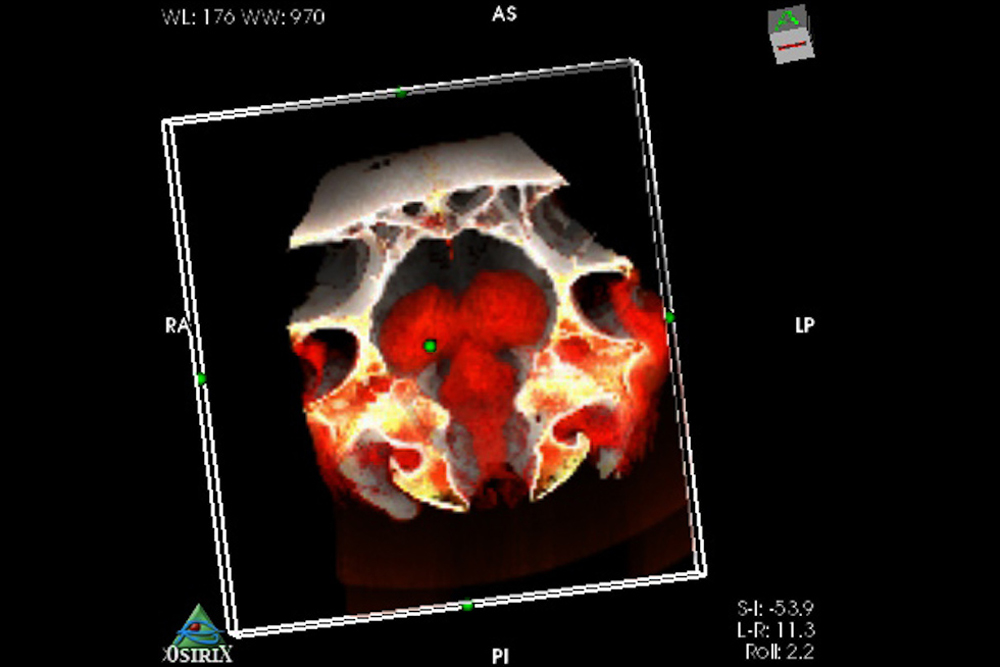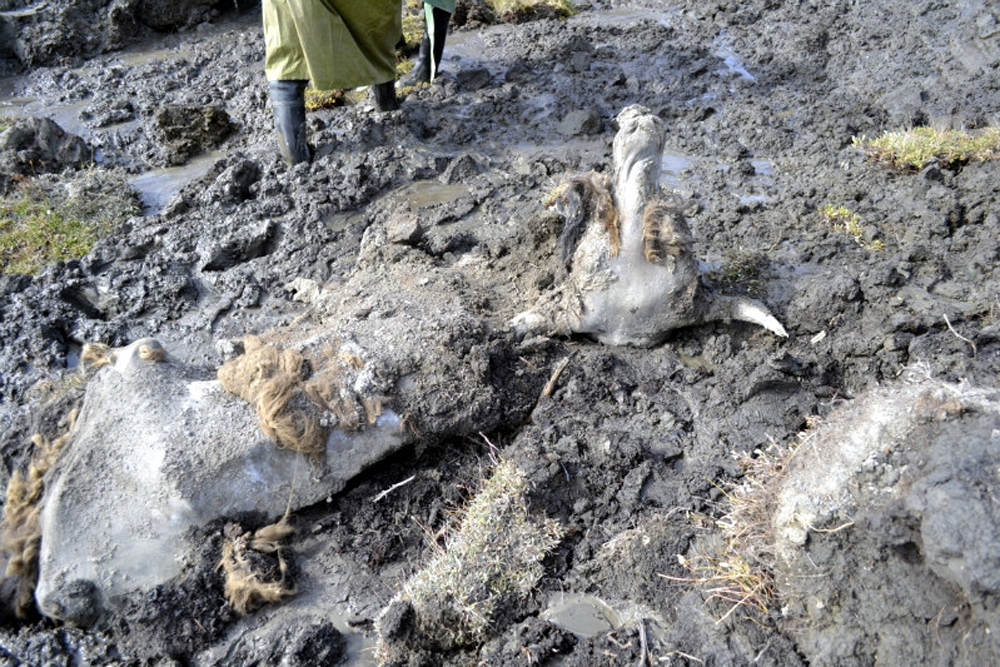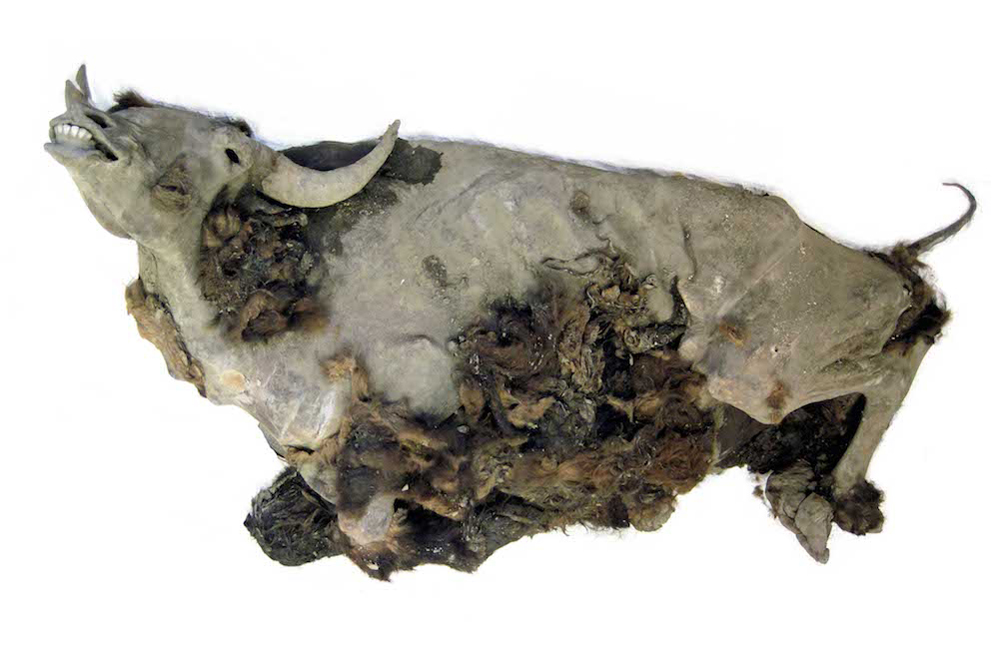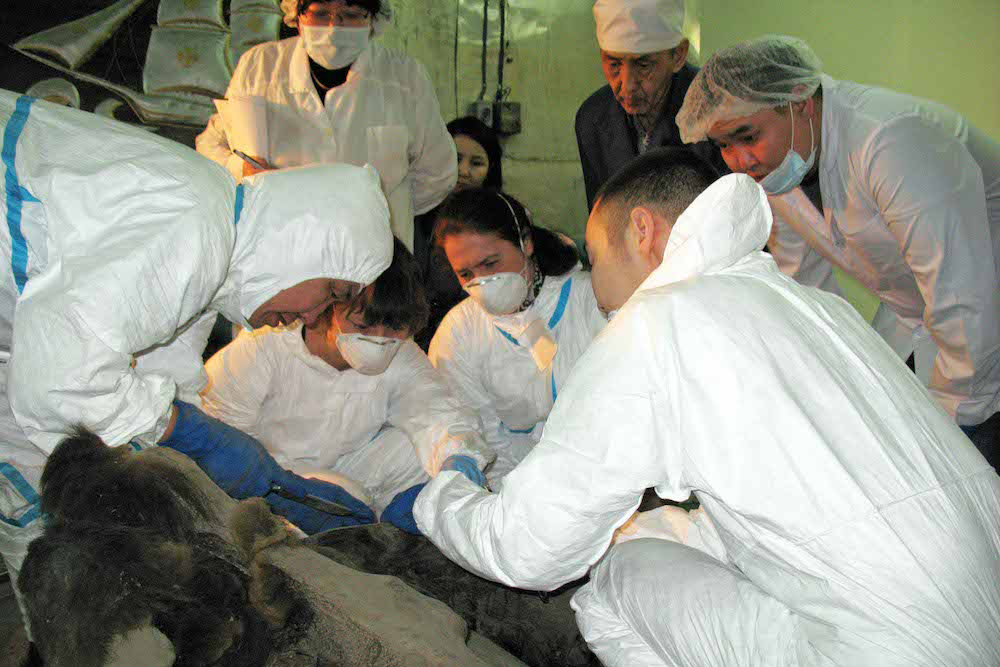Photos: 9,000-Year-Old Bison Mummy Found in Siberia
In 2011, the preserved remains of a Steppe bison (Bison priscus) — an ancient relative of modern bison — was uncovered by a tribe in North Siberia's Yana-Indigirka Lowland. Researchers have performed a thorough necropsy, or autopsy, of the frozen creature, and the results are being presented today (Nov. 6) at a conference in Berlin. The findings will also be published in an upcoming edition of the Journal of Vertebrate Paleontology. Here's a look at this incredible, ancient creature: [Read full story about the bison mummy]
Bison brain scan
The freezing conditions of northern Siberia left the Yukagir bison mummy's brain — as well as all of its other internal organs — almost perfectly persevered. The researchers performed a computerized tomography, or CT, scan on the mummy's brain, an image of which can be seen here. In the months to come, the researchers will compare the data they gather about this ancient animal's organs to data they've collected from modern specimens of American bison (Bison bison). (Credit: Dr. Albert Protopopov)
Bison mummy discovery
Members of the Yukagir tribe in the Yana-Indigirka Lowland of northern Siberia discovered the bison mummy along the melting shores of a lake. The mummy was loaned to a regional Academy of Science, where it was kept frozen until it could be thoroughly examined by researchers. (Credit: Grigory Gorokhov)
Well-preserved remains
This specimen is the most complete frozen mummy of the Steppe bison yet known, the researchers said. The so-called Yukagir bison mummy has a complete brain, heart, digestive system and blood vessels, but some of the animal's organs have shrunk significantly over time. (Credit: Dr. Gennady Boeskorov)
Get the world’s most fascinating discoveries delivered straight to your inbox.
Bison necropsy
The brain and other internal organs of the bison mummy were well preserved after nearly 10,000 years in the frozen ground. (Credit: Dr. Evgeny Maschenko)
Frozen in time
The necropsy revealed a relatively normal anatomy with no obvious cause of death. The procedure did, however, find a lack of fat around the animal's abdomen, which suggests the animal may have died from starvation. (Credit: Dr. Evgeny Maschenko)
Siberian specimen
Russian scientists, including researchers at the Russian Academy of Sciences and the Paleontological Institute in Moscow, are some of the people involved with the project. (Credit: Dr. Natalia Serduk)
Follow Elizabeth Palermo @techEpalermo. Follow Live Science @livescience, Facebook & Google+.








